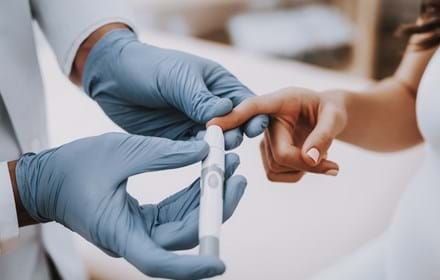
People using insulin pump less likely to develop foot issues
Tests find insulin pump users less likely to develop diabetes-related foot problems than those using syringes.
A study by researchers in Sweden has found that almost one fifth of young people with type 1 diabetes have some kind of reduced sensation in their feet related to the condition.
Researchers at Lund University found that 19% of the children and adolescents with type 1 diabetes taking part in their study showed signs of impaired vibrotactile (perception of vibration through touch) sense in their feet.
Researchers noted that decreased sensation in the feet was lower among children and adolescents treated with an insulin pump, compared to those who took their insulin by using a syringe. The study included 73 children and adolescents aged eight to 18 years with type 1 diabetes.
A new method of testing, called multi-frequency vibrometry, was used in the study as researchers used the VibroSense Meter instrument to measure the sensation of vibration on fingers and feet of children and adolescents with type 1 diabetes. Researchers said using the meter was similar to how a hearing test is conducted.
The study showed that 19% of young people taking part in the study showed signs of decreased sensation in their feet, or peripheral diabetes neuropathy. The HbA1c (blood sugar levels) did not differ between the young people with impaired and normal sensation, nor were there any differences between sex.
The study also tested the young people’s sensations in their feet using so-called monofilaments - a method of testing for loss of protective sensation in people with diabetes - a key method for avoiding diabetes-related foot ulcers. None of the children taking part in the study showed signs of impaired sensation when tested for light monofilament pressure.
The young people taking part in the study placed a finger or part of the sole of the foot on a probe that vibrates with seven different frequencies of different intensities. When the children perceived a vibration in the skin, they pressed a response button, and when the vibrations stopped, they release the button. The method measured the patient’s sensation for the different vibration frequencies.
Toni Speidel, CEO VibroSense Dynamics AB, said: “The presence of sub-clinical diabetes neuropathy among children and adolescents is well known but the observed correlation between using an insulin pump and presence of subclinical diabetes neuropathy is extremely interesting.”
The study was presented recently at the American Diabetes Association's 77th Scientific Sessions in San Diego, California.
Find out more about DRWF-funded research here
Find out more about DRWF fundraising here
For latest update follow DRWF on Facebook, Instagram and Twitter
To receive the charity’s latest bulletins as they become available, please sign up here
Read DRWF diabetes information leaflets here
Join the Diabetes Wellness Network here
I would like to make a regular donation of
I would like to make a single donation of
There are lots of ways to raise money to support
people living with all forms of diabetes.
Bake, Swim, Cycle, Fly ... Do It For DRWF!
Fundraise with us
Recent News


